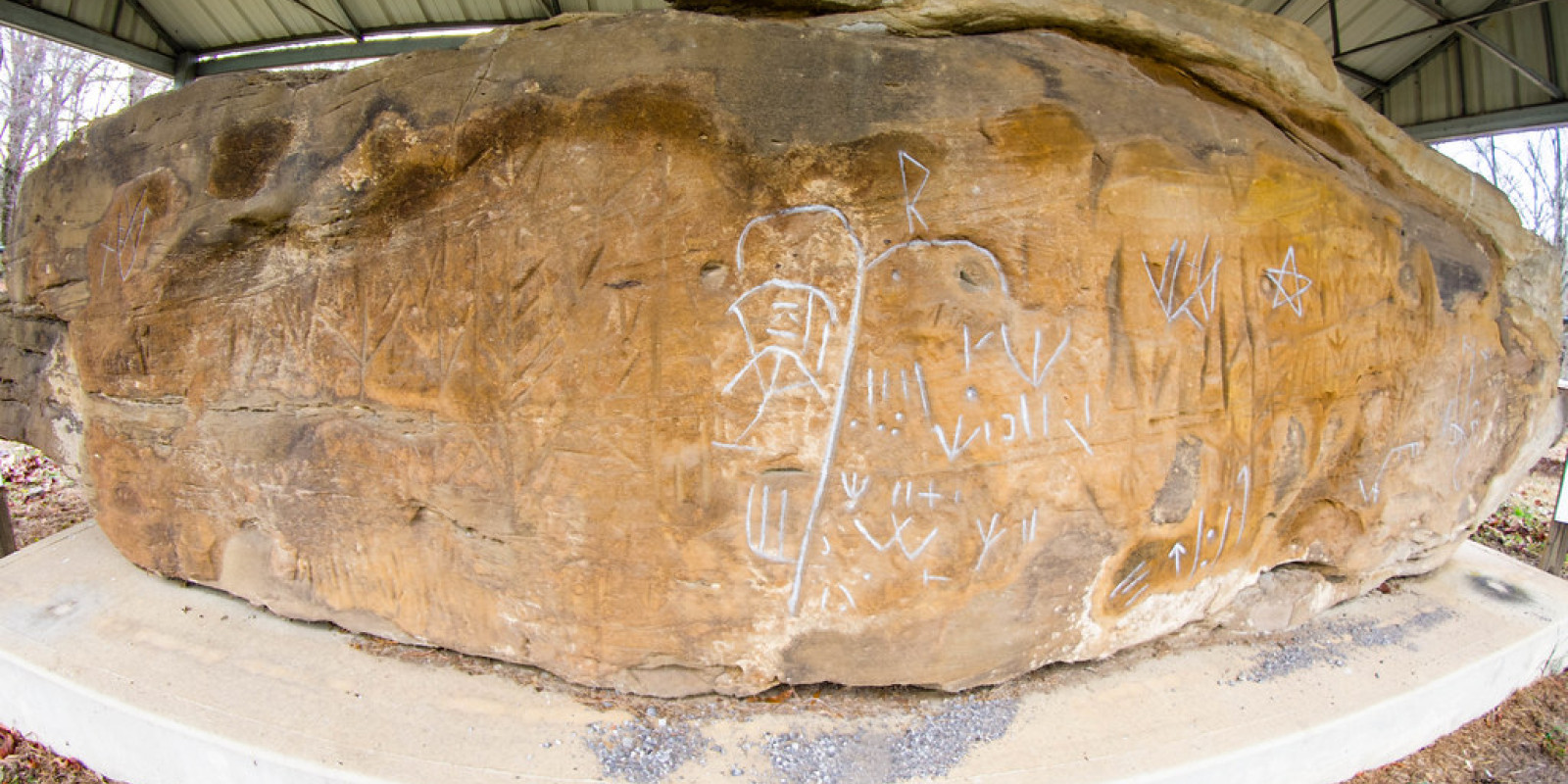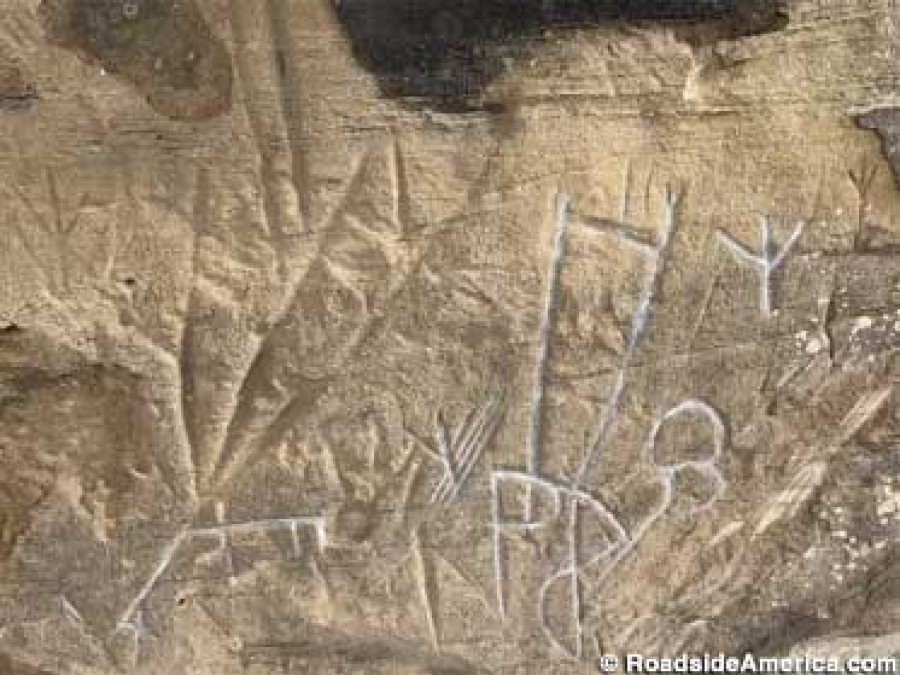The Red Bird Petroglyph
A Mystery in Stone
The Red Bird Petroglyph—also called the Red Bird River Petroglyphs or Marked Rock—is one of Kentucky’s most intriguing historical treasures. Carved into a 50-ton slab of sandstone, the rock bears dozens of mysterious markings whose meaning has sparked debate for more than a century. Measuring nearly 22 feet long and 6 feet high, the stone looms as both artifact and legend.
From River Bluff to City Park
For generations, the slab stood on a cliff above the Red Bird River in Clay County. On December 7, 1994, heavy rains loosened the rock, sending it tumbling down onto Kentucky Route 66. Miraculously, it remained intact. Two days later, on December 9, 1994, the stone was carefully moved to Rawlings/Stinson Park in downtown Manchester. Today, it rests under a shelter, fenced and preserved for all who wish to see it.
Once listed on the National Register of Historic Places (1989), the stone was removed in 2003 due to its relocation—but its significance to Clay County’s identity has only grown stronger.
Legends of Chief Red Bird
Local tradition connects the carvings to Chief Red Bird, a legendary Cherokee leader remembered in Appalachian lore. The river that flows beside the rock still bears his name. Oral history suggests the carvings may honor him and his people, and some Cherokee scholars believe symbols on the rock depict clan emblems—including the Deer Clan and Bear Clan—possibly dating to the late 1700s.
Some even connect the markings to events around 1796–1797, when Chief Red Bird was said to have been killed and buried nearby.
Theories & Debate
The carvings have drawn wide-ranging interpretations:
-
Native American Origins (Mainstream View):
Archaeologists from the University of Kentucky and University of Tennessee argue the designs are consistent with Indigenous petroglyph traditions in the region, carved by Cherokee or earlier Native inhabitants. -
Old World Scripts (Fringe Theory):
In the 20th century, local historian James Burchell claimed that the carvings included characters from eight different Old World alphabets—among them Greek, Hebrew, Iberian-Punic, and Norse runes—suggesting possible pre-Columbian contact.However, most scholars dismiss this as unlikely, noting the designs are mostly geometric shapes and do not form coherent texts in any known language.
-
Layered Markings Over Time:
Another explanation is that the petroglyphs were not carved all at once, but by different people over many years—perhaps a mixture of Cherokee symbols, settler markings, and later graffiti, blending into the enigmatic surface we see today.
Why Visit?
Today, the Red Bird Petroglyph is one of Manchester’s must-see attractions. Nestled in Rawlings/Stinson Park just off Memorial Drive, it offers a glimpse into Kentucky’s layered past: Cherokee legend, frontier settlement, and the enduring human urge to leave a mark in stone.
Visitors stand before it and wonder: Was this a memorial to a Cherokee chief? A sacred recording of clan history? Or simply a centuries-old canvas of markings whose meaning is forever lost?
Whatever the answer, the Red Bird Petroglyph remains a powerful reminder that history is not just written in books—it is carved into the land itself.

